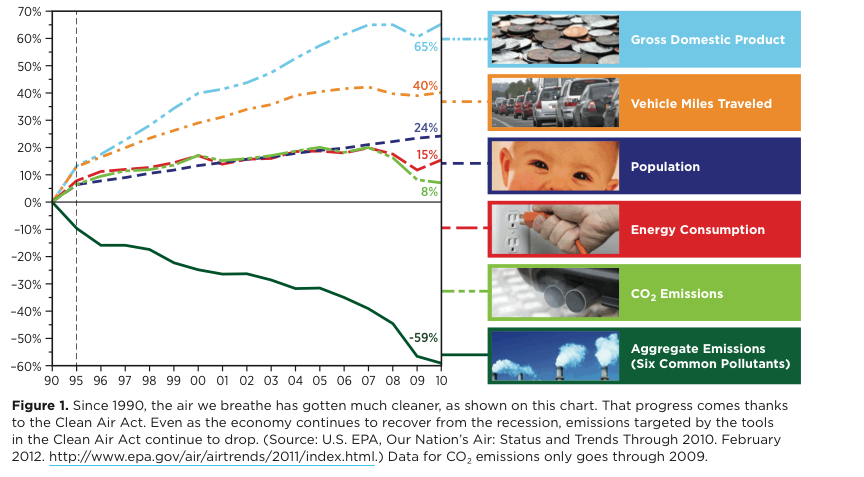AMERICAN LUNG ASSOCIATION
Thanks to the Clean Air Act, we’ve made great progress in cleaning up air pollution from across the U.S. The State of the Air 2012 shows that the air quality in many places has improved, but that over 127 million people—41 percent of the nation—still suffer pollution levels that are too often dangerous to breathe. Unhealthy air remains a threat to the lives and health of millions of people in the United States, despite great progress. Air pollution lingers as a widespread and dangerous reality even as some seek to weaken the Clean Air Act, the public health law that has driven the cuts in pollution since 1970.
The State of the Air 2012 report looks at levels of ozone and particle pollution found in official monitoring sites across the United States in 2008, 2009, and 2010. The report uses the most current quality-assured nationwide data available for these analyses.
For particle pollution, the report examines fine particulate matter (PM2.5) in two different ways: averaged year- round (annual average) and over short-term levels (24-hour). For both ozone and short-term particle pollution, the analysis uses a weighted average number of days that allows recognition of places with higher levels of pollution. For the year-round particle pollution rankings, the report uses averages calculated and reported by the U.S. Environmental Protection Agency (EPA). For comparison, the State of the Air 2011 report covered data from 2007, 2008 and 2009.
Overall Trends
Thanks to stronger standards for pollutants and for the sources of pollution, the United States has seen continued reduction in ozone and particle pollution as well as other pollutants for decades. The chart from the EPA on the previous page shows that since 1990, the air has gotten cleaner while the population, the economy, energy use and miles driven increased greatly. Even as the economy begins to improve after the recession, air emissions continue to drop.
Air quality has improved greatly since 2001. As of 2010:
- Ozone is 13 percent lower;
- Year-round particle pollution is 24 percent lower; and
- Short-term particle pollution is 28 percent lower.
Download the full report (PDF) here: State Of The Air 2012
About the American Lung Association
www.lung.org
“The American Lung Association is the leading organization working to save lives by improving lung health and preventing lung disease through Education, Advocacy and Research. With the generous support of the public, we are “Fighting for Air.” When you join the American Lung Association in the fight for healthy lungs and healthy air, you help save lives today and keep America healthy tomorrow.”







 RSS Feed
RSS Feed